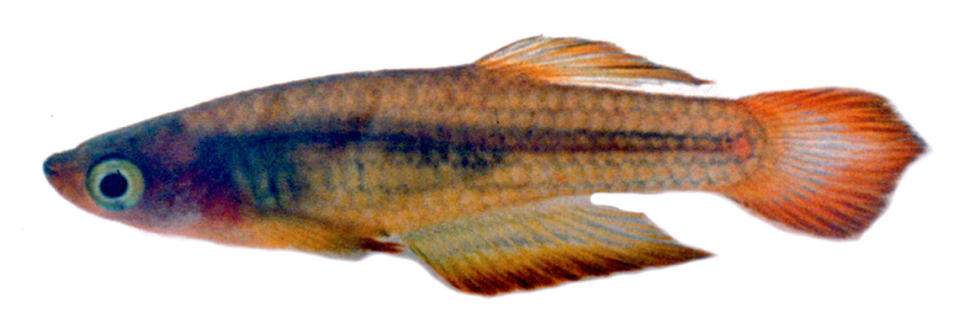Swamp creature — with ‘very large’ eyes — discovered in Madagascar. It’s a new species
In a small, isolated swamp along the coast of Madagascar, a multi-colored fish swam just below the surface of the water.
Near the top, the water was clear, allowing the light to reflect off the myriad of colors splashed across the fish’s scales. But as the water deepened, it became murky and dark.
In 1994, researchers found the swamp and collected the bright fish from the water. They brought it to the University of Michigan Museum of Zoology, where it was kept in an aquarium, according to a study published in the journal BioOne on April 24.
The fish lived its life there, thousands of miles from home, and was fed algae, zooplankton and larvae. Researchers tried to artificially encourage reproduction, to no success.
Over the years, the researchers returned to the pocket of water of the swamp in hopes of collecting more of the fish, but after 1997, there were no bright colors dancing just below the surface as the fish moved through the water.
The fish was extinct.
Now, 30 years after the initial discovery of the Madagascar swamp fish, researchers from the American Museum of Natural History have taken a closer look at the preserved specimen, and learned something surprising.
The fish was actually a new species, living in the aquarium the entire time.

Discover more new species
Thousands of new species are found each year. Here are three of our most eye-catching stories from the past week.
→Volcanic ocean creature — with 'long' legs — discovered in Japan. It's a new species
→'Flat'-headed creature — with multicolored eyes — discovered as new species in China
→Nocturnal creature — a 'rapidly-running' predator — discovered as new species in India
The “new extinct species” belongs to the genus Malagodon, a group of small fish that lived in the “forested coastal swamps” on the eastern coast of Madagascar, according to the study.
Malagodons were discovered in 2023 and are known to be extinct in the wild, the researchers said.
The new species, Malagodon honahona, meaning “swamp” or “swampy” in the local language Malagasy, has an elongated body with an orangish-brown base color, a purplish-blue head and reddish-orange tail, according to the study.
The rays of the tail are “spinelike” and the eyes are “very large” in comparison to the size of the fish’s body, the researchers said.
The pelvic rays of the fish also have small hooks on the end, developing more as the fish matures, according to the study.
“Despite repeated attempts over the past three decades, no additional specimens of M. honahona have been collected from the type of locality or other potentially suitable habitat in the region, and therefore the species is presumed to be extinct,” the study authors wrote.
One hypothesis for its demise is the degradation of the coastal rainforest, cutting off the water source that once kept the small forests swamps full.
Another exotic species, not native to Madagascar, was also introduced in the area, the researchers said, potentially creating competition for the species.
“This, in combination with competition from exotic species such as G. holbrooki, which were far more common at the type locality than the new species even in 1994, likely contributed to the rapid extinction of M. honahona not long after the species was first discovered,” according to the study.
Madagascar is an island nation of the east coast of Mozambique in the Indian Ocean.
‘Blunt’-snouted creature pulled from river in Turkey — and discovered as new species
Pink sea creature found at park in Australia — and discovered as new species. See it
Cave creature — with ‘blade-shaped’ teeth — discovered as new species in Thailand
River creature — with a white ‘collar’ — discovered as a new species in Colombia

